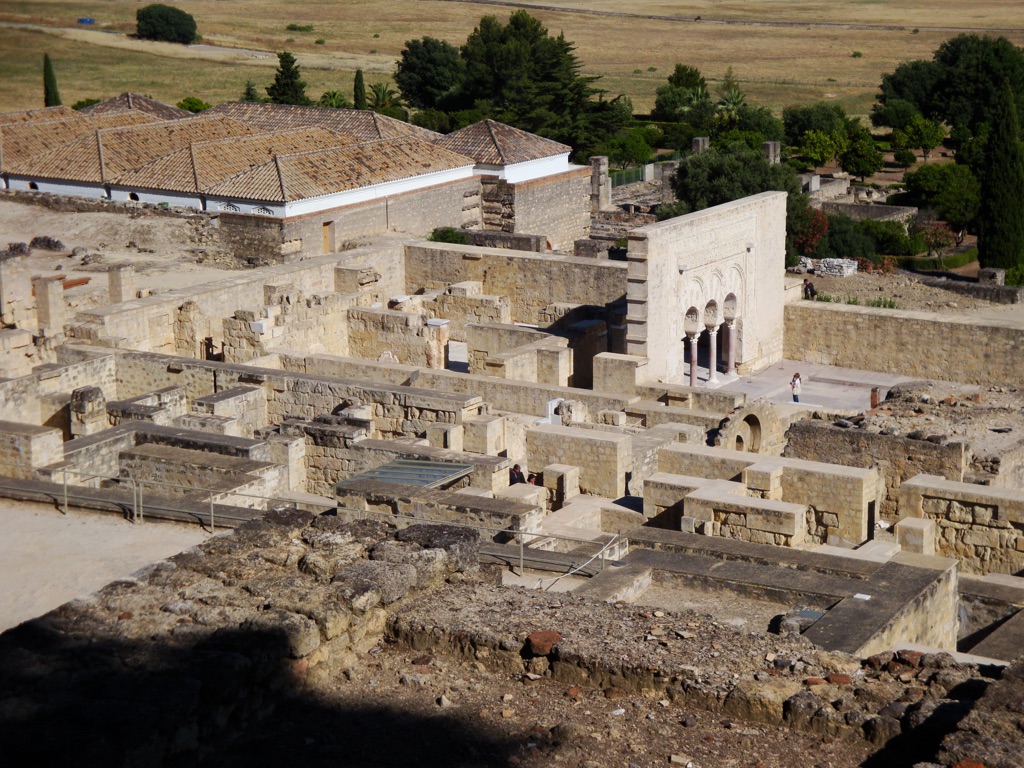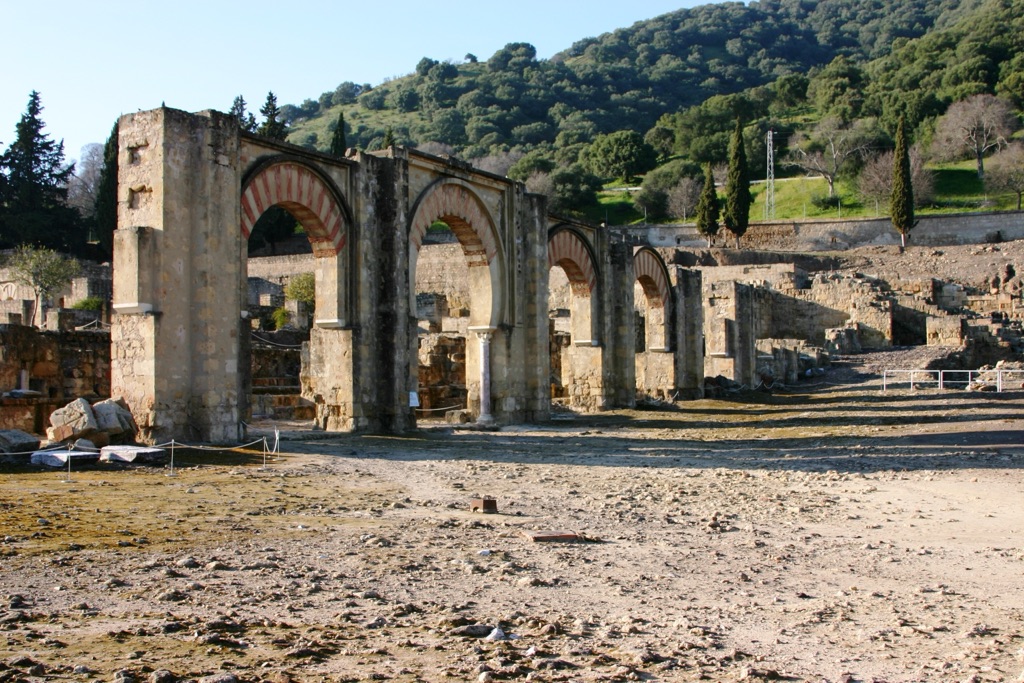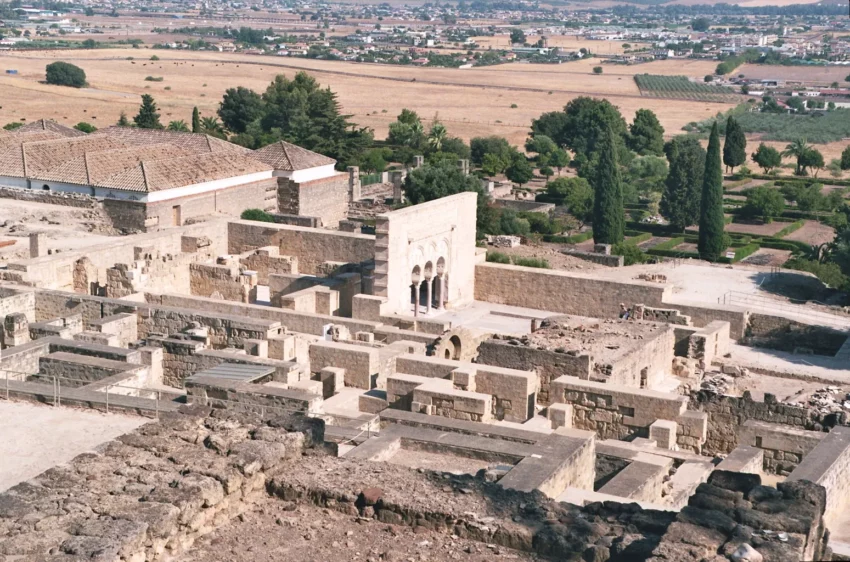The Caliphate City of Medina Azahara, a palatial city complex, stands as a testament to the grandeur of the Umayyad dynasty in al-Andalus. Built by Caliph Abd-ar-Rahman III in the 10th century, it served as a political and administrative center. Located near Cordoba, Spain, the ruins reflect the cultural zenith of the Caliphate of Cordoba. The city was short-lived, however, as it was sacked during a civil war and fell into ruin. Today, it is an archaeological site that offers invaluable insights into Islamic art, architecture, and civilization in medieval Spain.
Get your dose of History via Email
Historical Background of Caliphate City of Medina Azahara
Discovered in the early 20th century, Medina Azahara’s ruins have since undergone significant excavation and research. The city was built by Abd-ar-Rahman III, the first Caliph of Cordoba, starting in 936 AD. It was a symbol of his power and the prosperity of his caliphate. The construction took over 25 years, employing thousands of workers. The city was named after Azahara, the favorite of Abd-ar-Rahman III, according to some sources.
Medina Azahara was not just a residence for the Caliph but also a governmental hub. It housed administrative offices, mosques, and gardens. The city was a marvel of its time, with advanced infrastructure such as water supply systems and roads. It was inhabited by the Caliph, his court, and numerous civil servants. The city’s significance was such that it was the de facto capital of al-Andalus.
However, the city’s glory was short-lived. In 1010, during a period of civil unrest and war, Medina Azahara was sacked and destroyed. It was subsequently abandoned and forgotten until its rediscovery. The ruins were first excavated by Ricardo Velázquez Bosco, who also restored the Mosque of Cristo de la Luz in Toledo.
Since its discovery, Medina Azahara has been the scene of extensive archaeological work. The site has revealed much about the life and culture of the Umayyad period in Spain. It has also become a symbol of the historical importance of Islamic culture in Europe. The city’s remains have been partially reconstructed, allowing visitors to appreciate its past splendor.

Medina Azahara’s historical importance is also marked by the events that took place there. It was not only a center of political power but also a cultural and intellectual hub. The city hosted ambassadors from across the world and was a place where scholars, poets, and artists gathered. Its destruction marked the end of an era in the history of Islamic Spain.
About Caliphate City of Medina Azahara
The Caliphate City of Medina Azahara was an architectural masterpiece of its time. The complex covered approximately 112 hectares and was structured as a terraced city on the slopes of Sierra Morena. The city was divided into three terraces, with the uppermost being the residence of the Caliph and the royal family.
The main materials used in the construction were brick, stone, and wood, with the extensive use of decorative elements such as carved marble, plasterwork, and glazed tiles. The city’s layout was carefully planned, with a central axis connecting the different areas of the complex. The architects and craftsmen employed innovative techniques to create a harmonious and aesthetically pleasing environment.

One of the architectural highlights of Medina Azahara is the richly decorated reception hall, known as the Salón Rico. This hall was used for official ceremonies and receiving important guests. Its walls were adorned with intricate carvings and the floor was paved with marble. The hall exemplified the opulence and sophistication of the Umayyad court.
The city also featured a grand mosque, gardens, and administrative buildings. The mosque was located on the middle terrace and was an important religious center for the inhabitants. The gardens of Medina Azahara, with their complex irrigation systems, were a marvel of engineering and horticultural design, reflecting the Islamic tradition of creating paradise on earth.
Despite its destruction, the remains of Medina Azahara provide a glimpse into the grandeur of Umayyad architecture. The site continues to be a focus of archaeological study and conservation efforts, aimed at preserving this jewel of Islamic heritage for future generations.

Theories and Interpretations
Some historians suggest that the city was built as a political statement by Abd-ar-Rahman III to demonstrate his power and independence from the eastern Caliphates. Others view it as a manifestation of the cultural and artistic zenith of the Umayyad dynasty in Spain.
The purpose of Medina Azahara has also been a subject of debate. While it clearly served as a governmental and administrative center, some suggest it was also intended as a retreat for the Caliph. The luxurious palaces and gardens could have provided a respite from the affairs of state.
There are mysteries surrounding the city, particularly regarding its sudden destruction and abandonment. The exact reasons for its downfall are not fully understood, and the extent of the destruction has led to speculation about the events that transpired during the civil war.

Historical records and archaeological findings have been used to interpret the site. Inscriptions, coins, and artifacts found at Medina Azahara have provided valuable information about the city’s inhabitants and their way of life. Dating of the ruins has been carried out using various methods, including carbon dating and analysis of construction techniques.
The interpretations of Medina Azahara are continually evolving as new discoveries are made. The site remains an active area of research, with each finding adding to the understanding of this complex and its significance in the broader context of Islamic history.
At a glance
Country: Spain
Civilization: Umayyad dynasty
Age: Constructed starting in 936 AD
Conclusion and Sources
Reputable sources used in creating this article include:
- Wikipedia: https://en.wikipedia.org/wiki/Medina_Azahara
- UNESCO: https://whc.unesco.org/en/list/1560/

